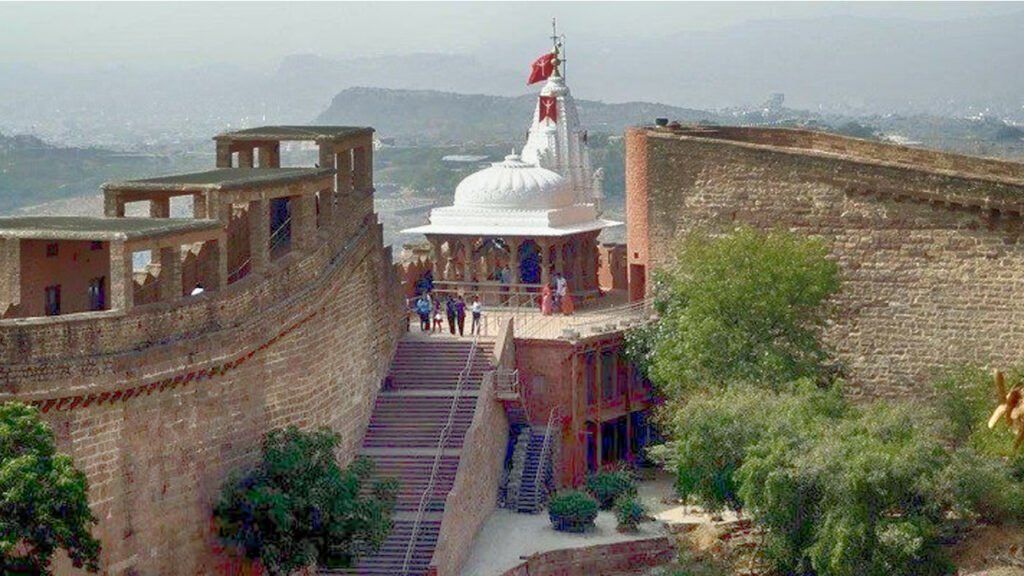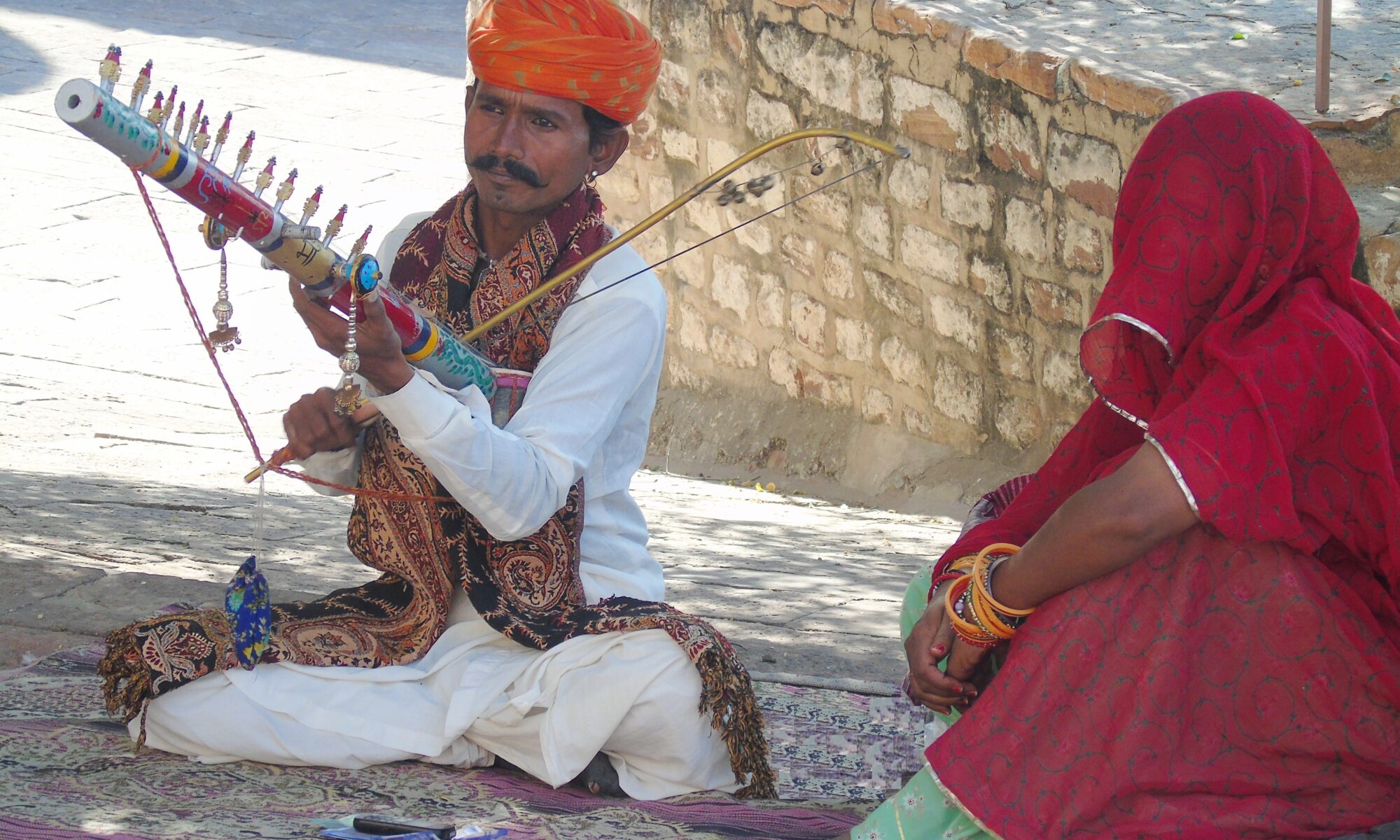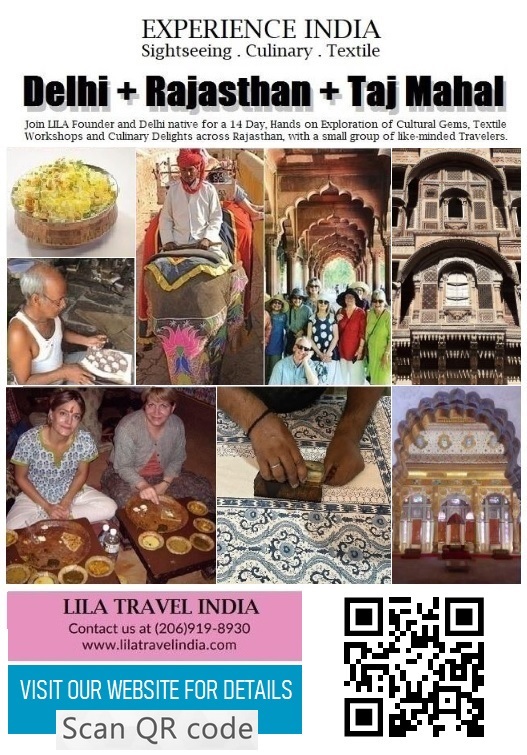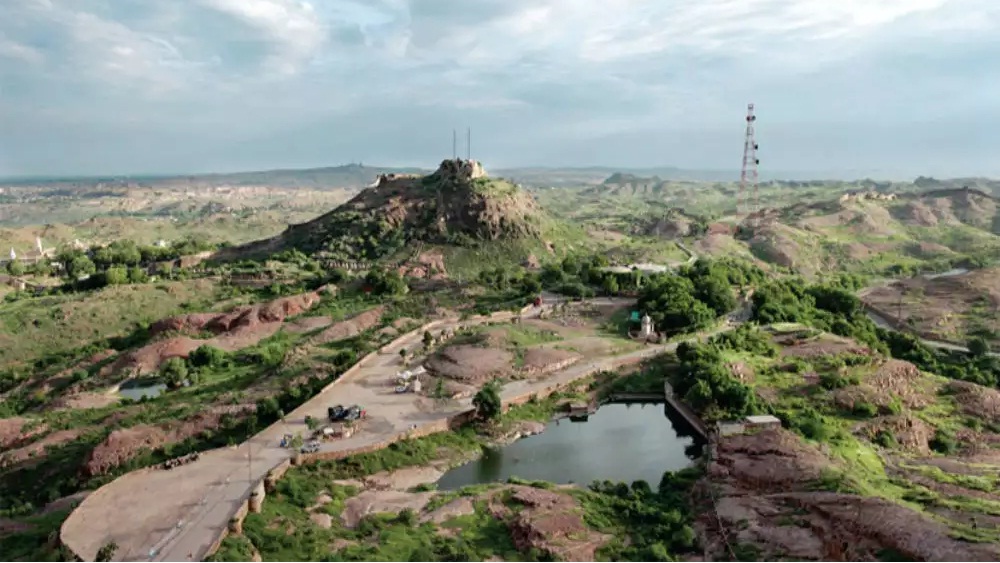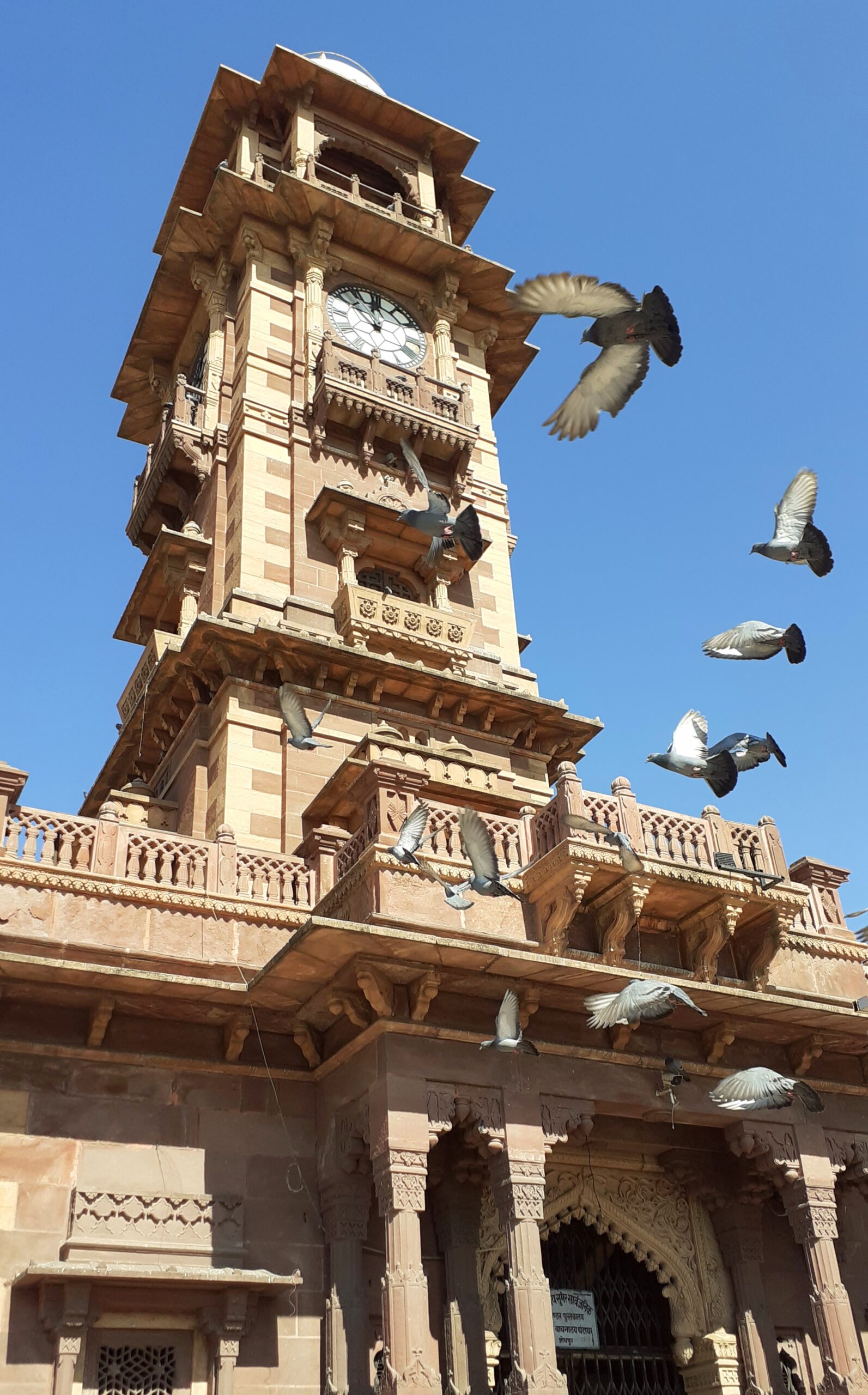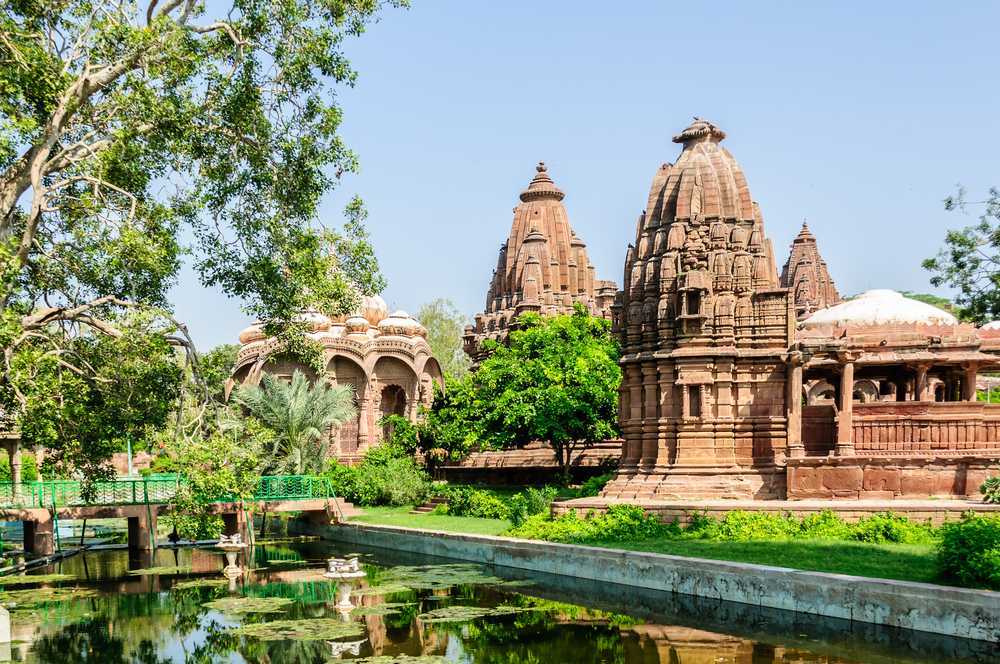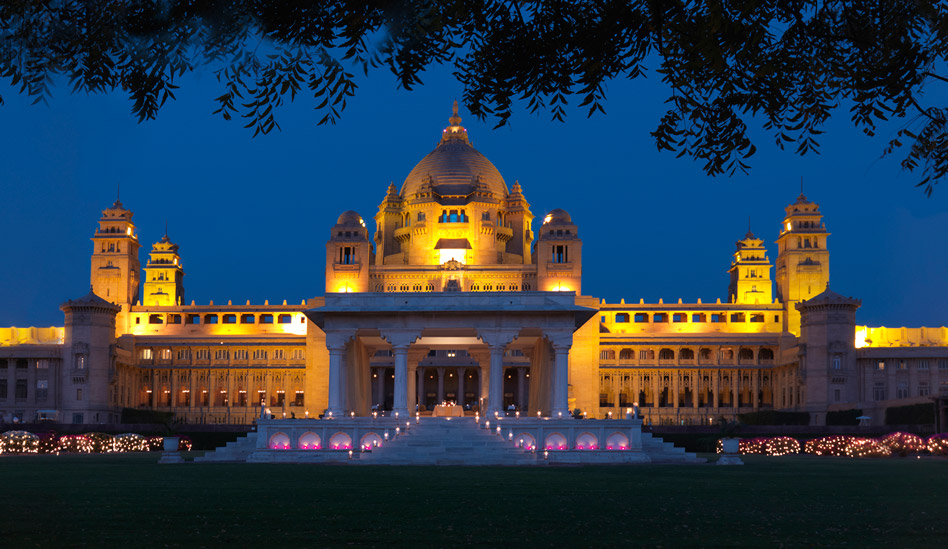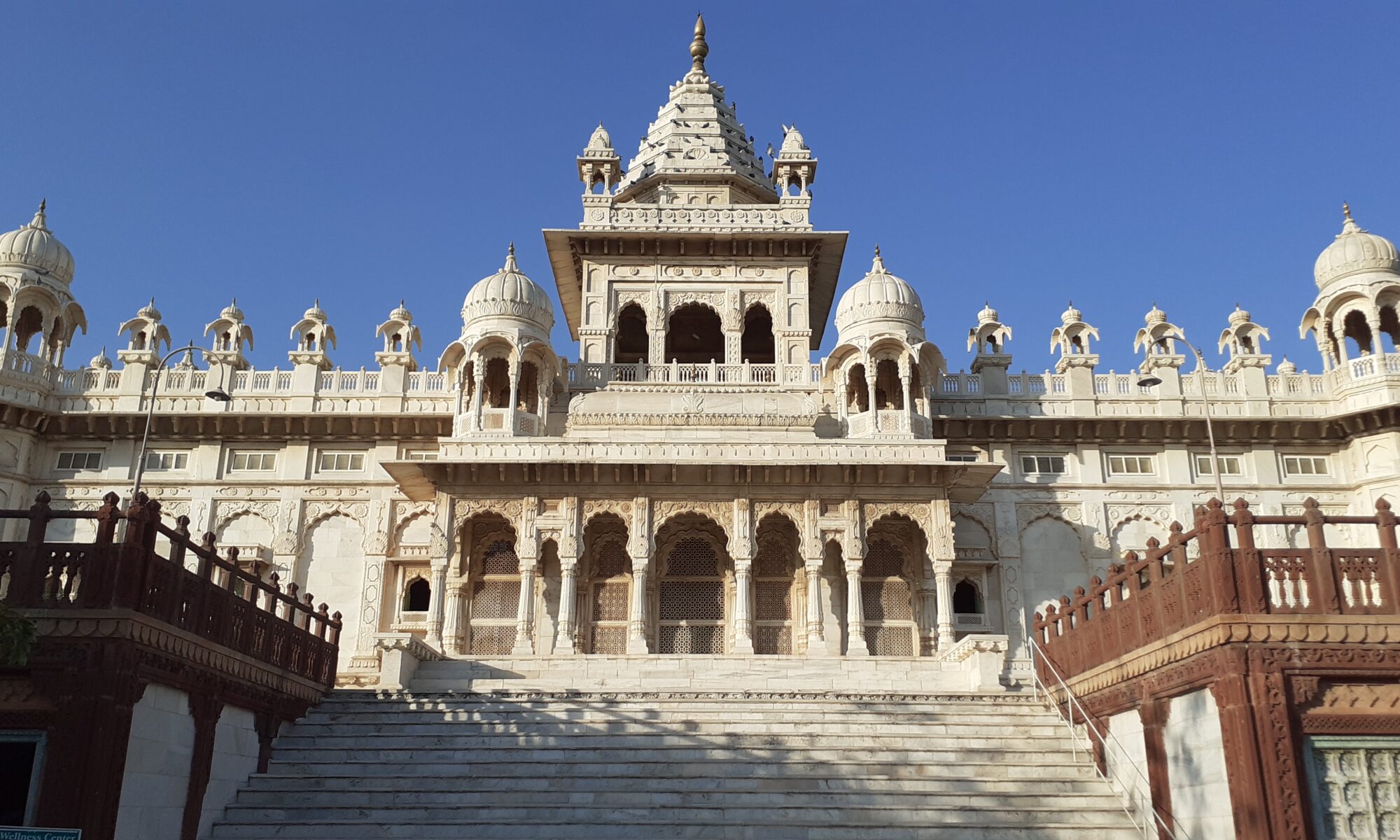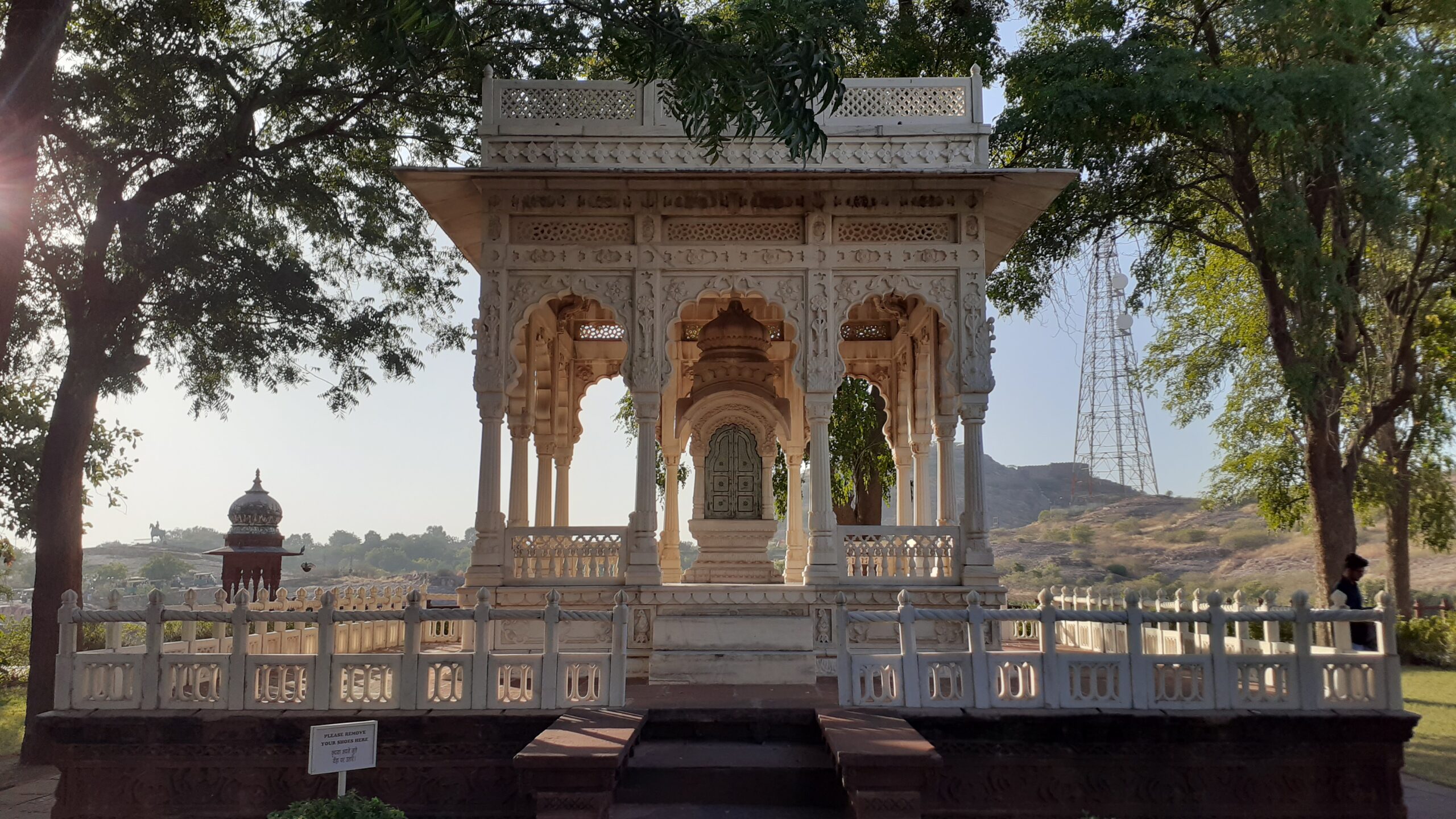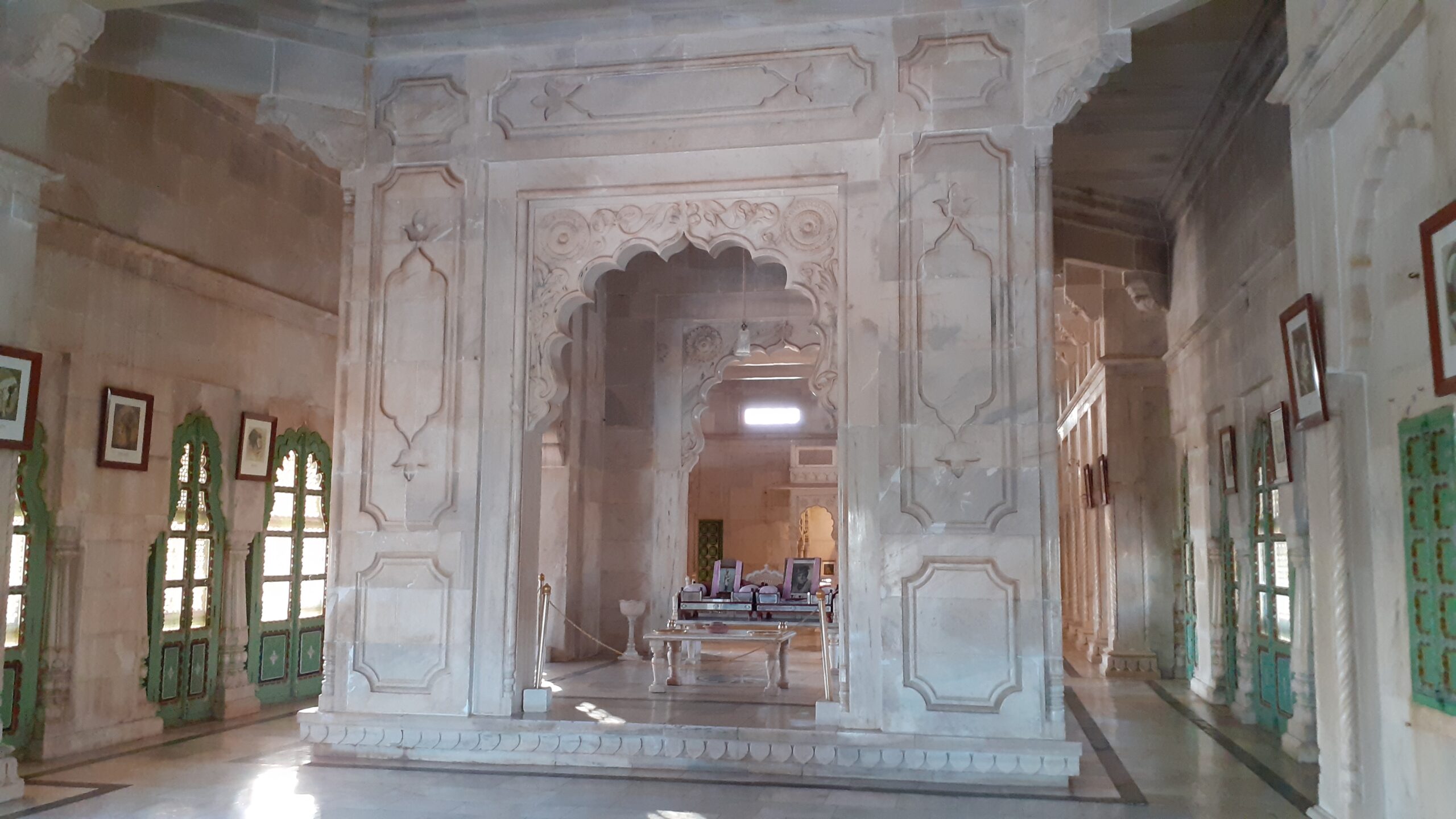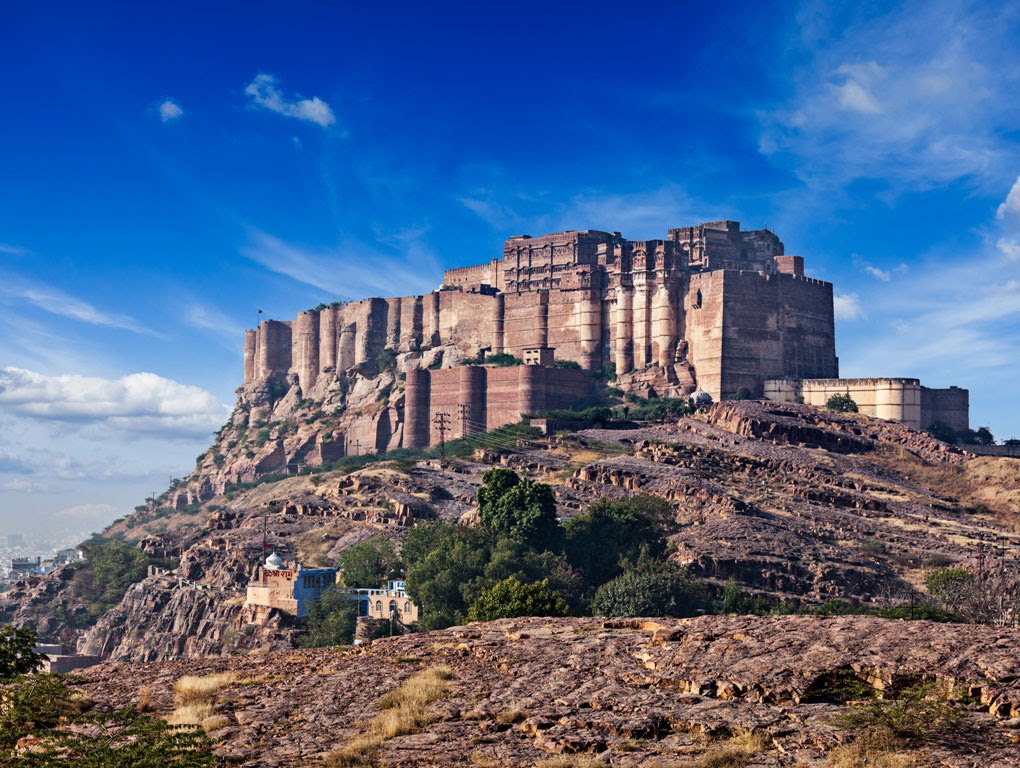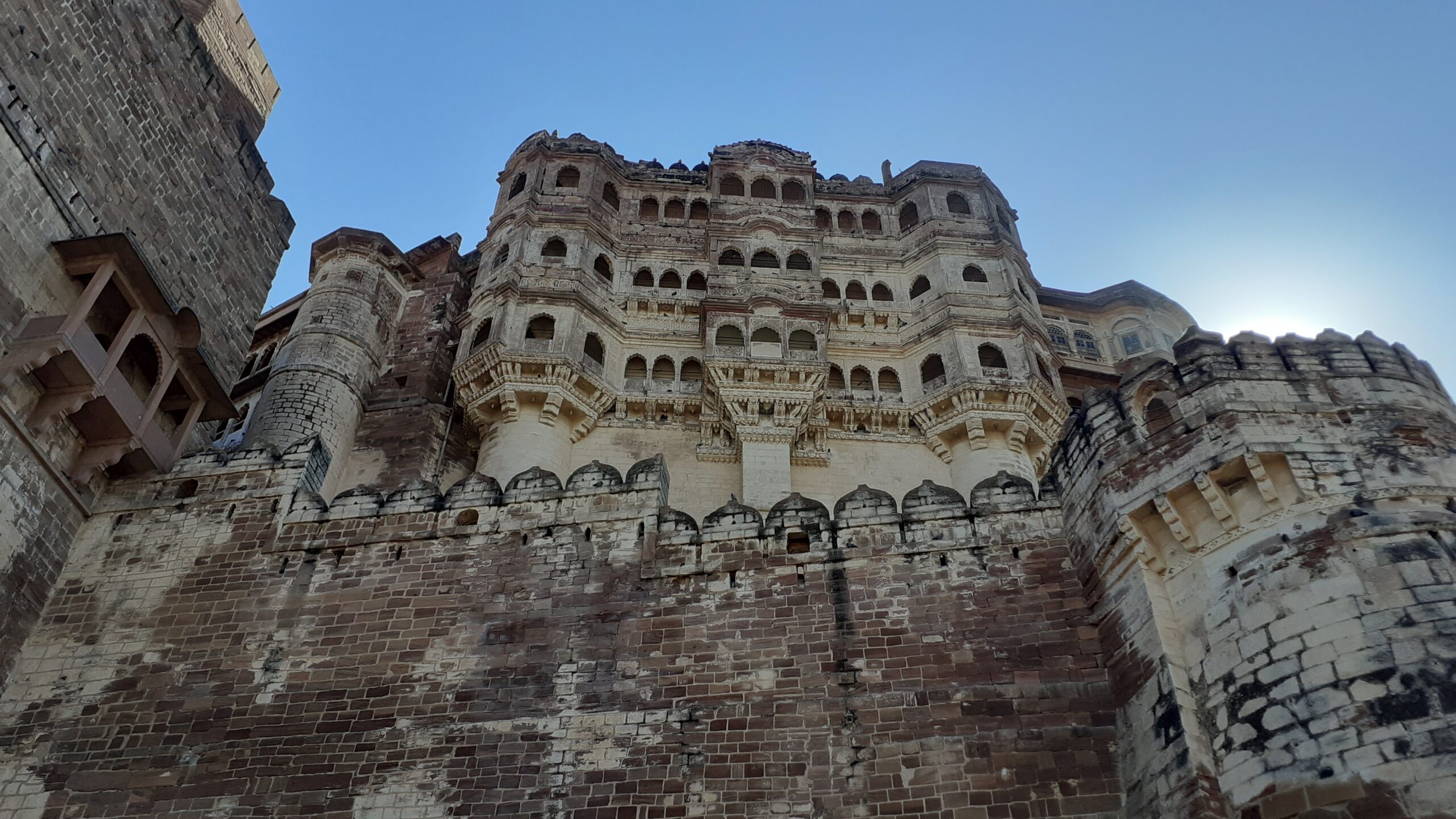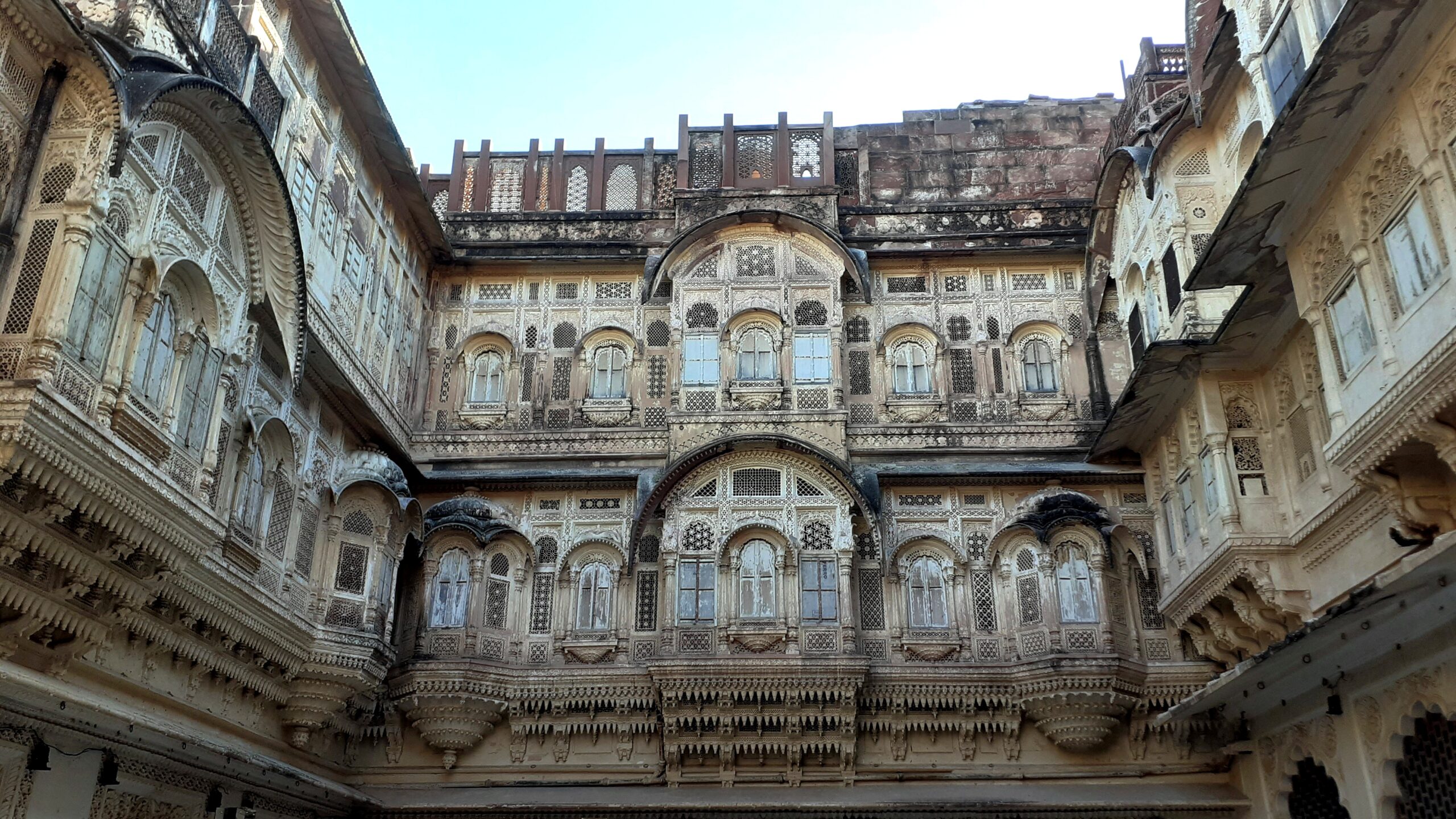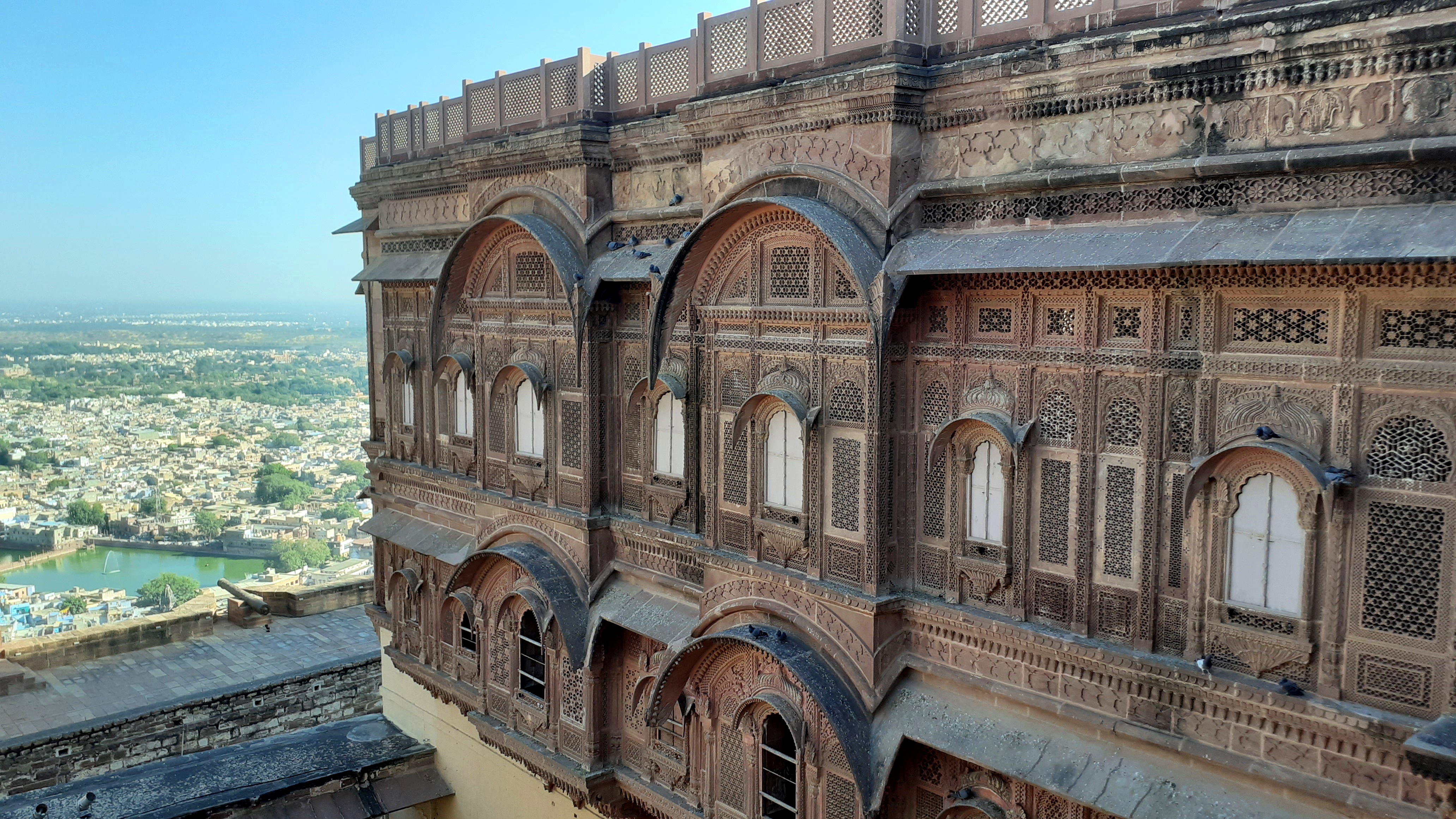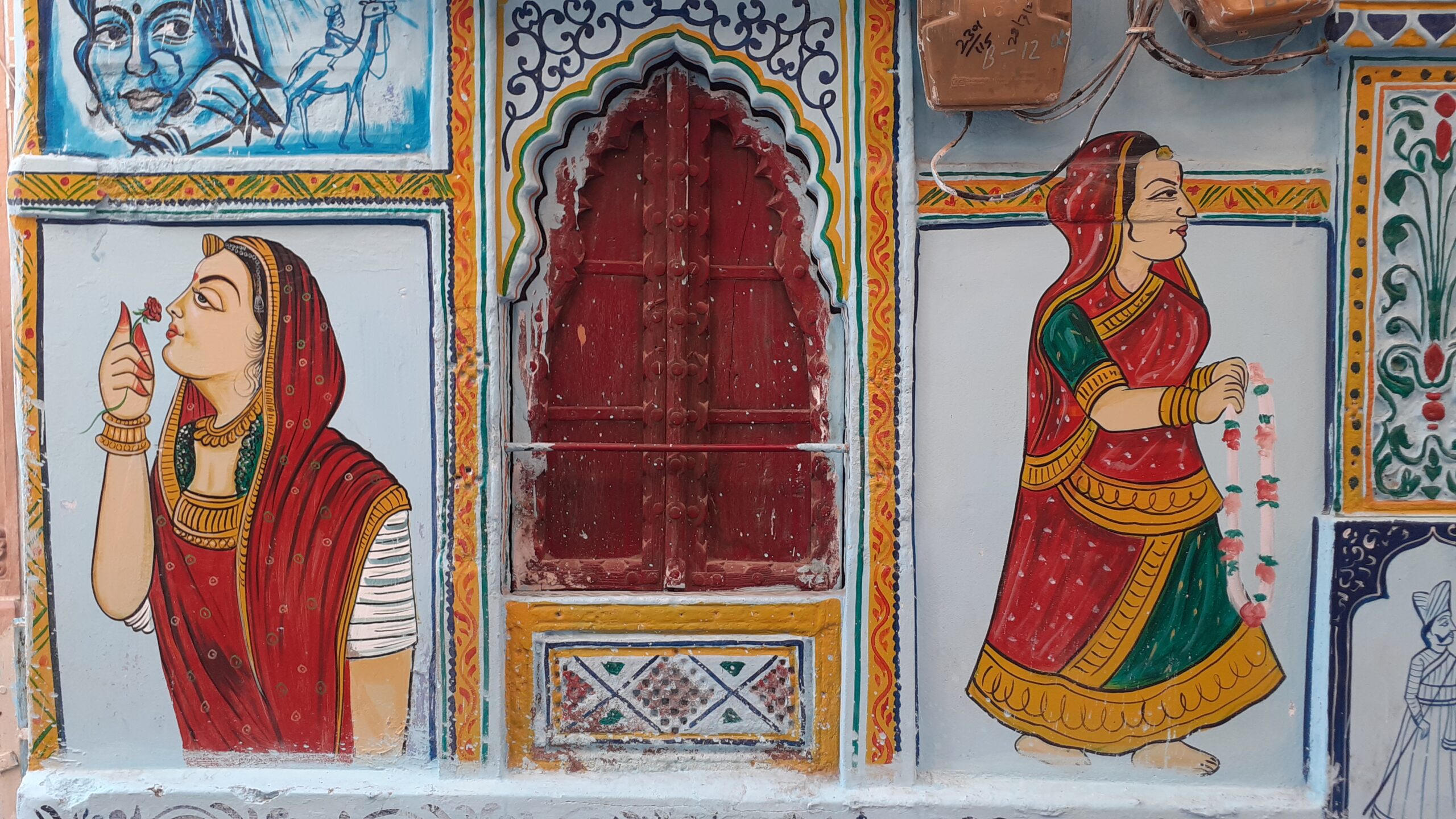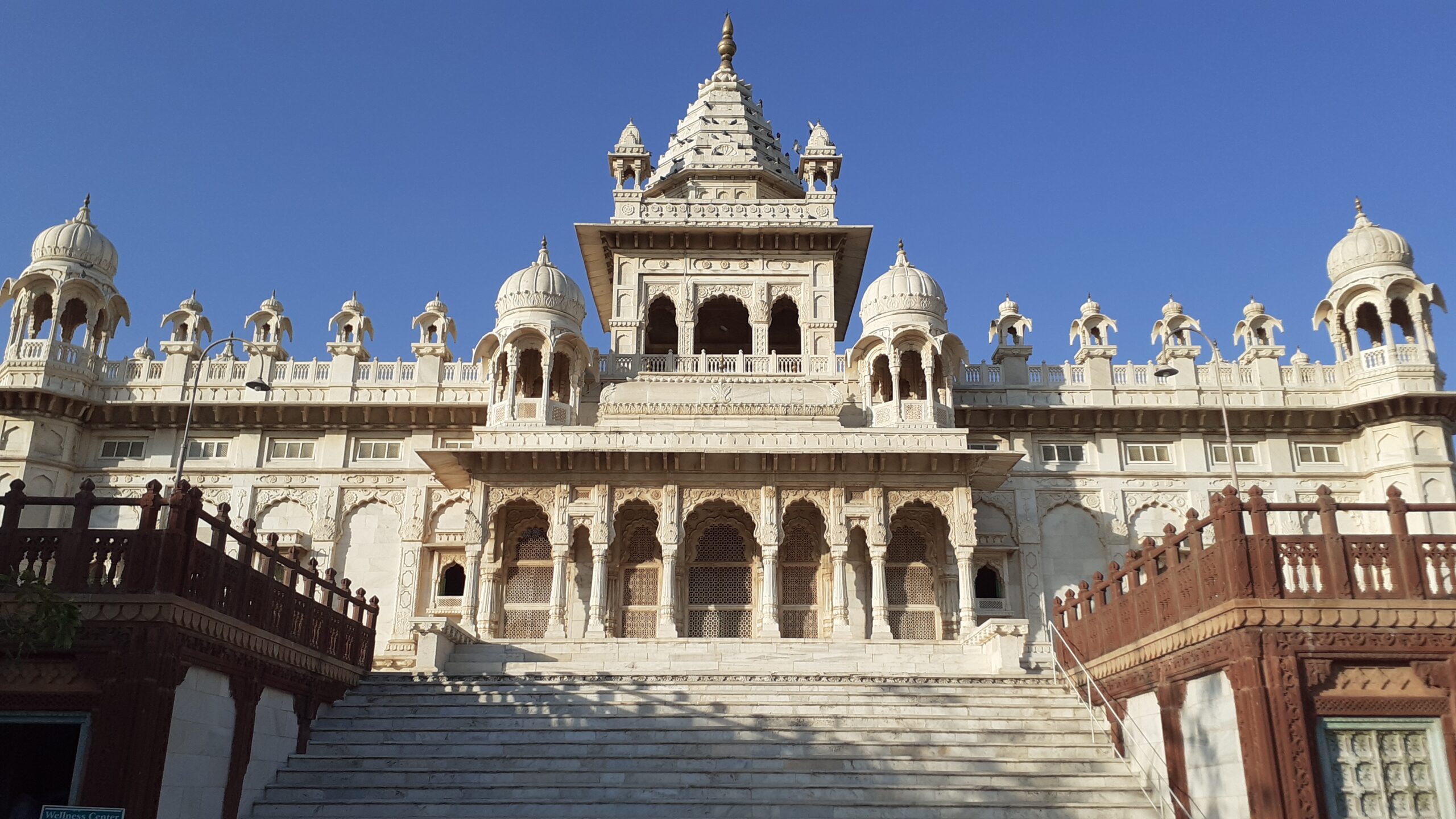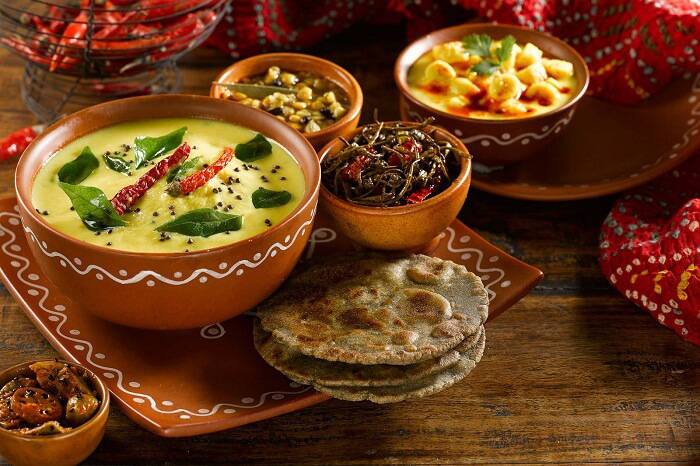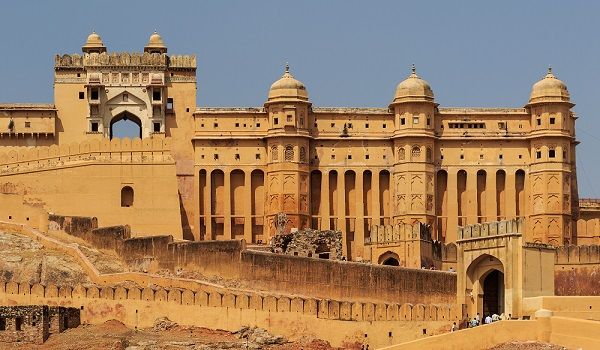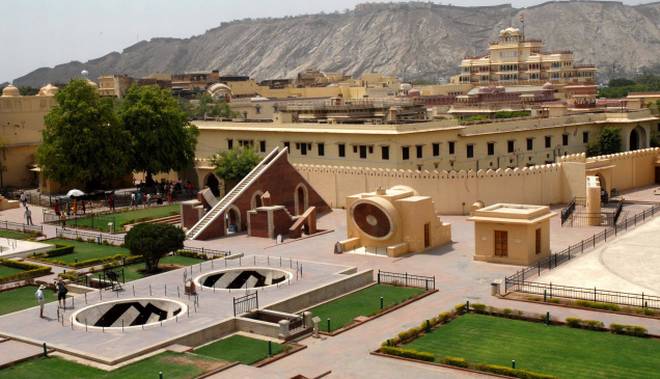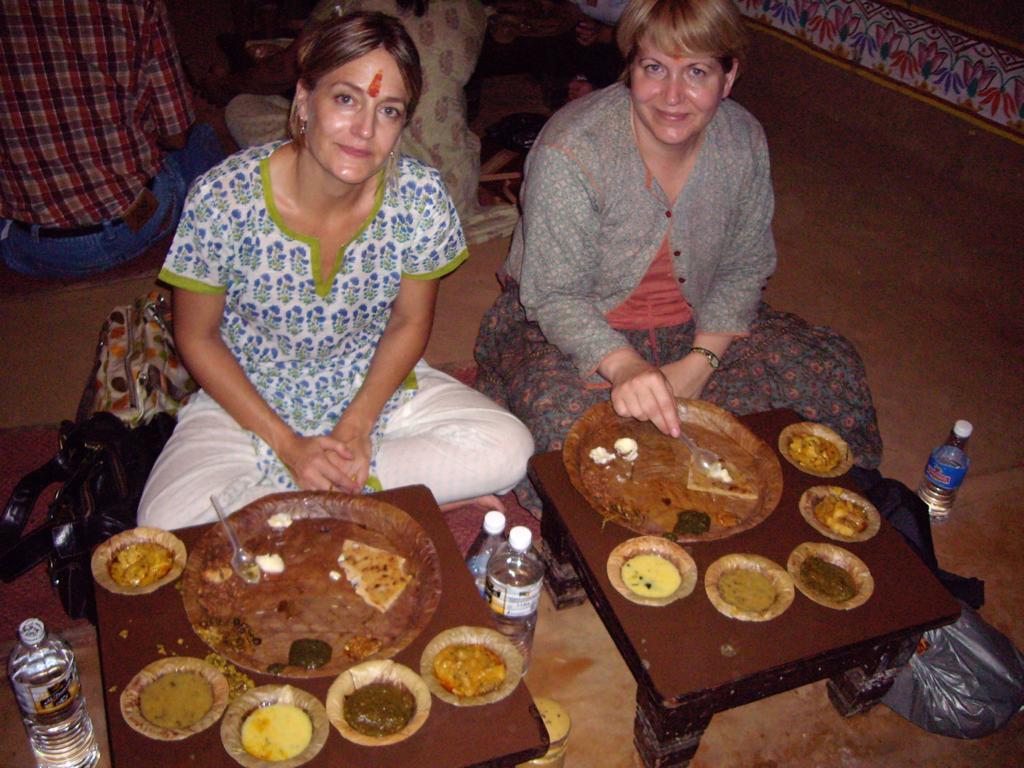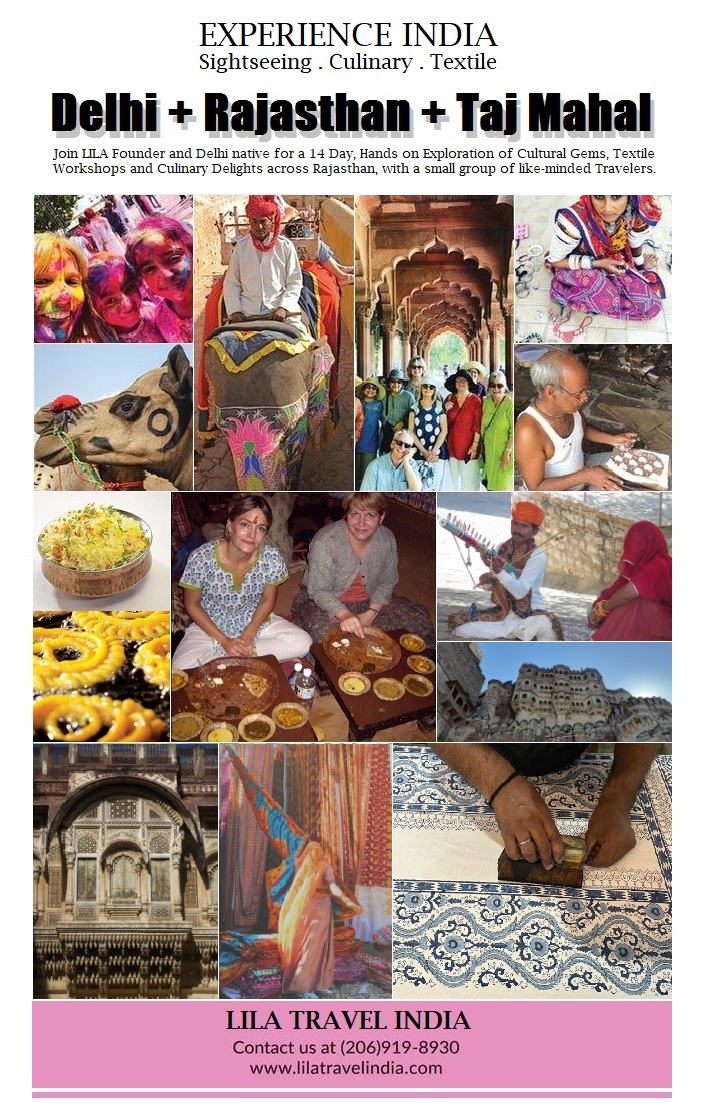The Chamunda Mata Temple in Jodhpur, Rajasthan, is a place of spiritual significance and architectural splendor. Nestled within the magnificent Mehrangarh Fort, the temple is dedicated to Chamunda Mata, a powerful Hindu goddess associated with strength and protection.
Located atop a hill, the temple offers breathtaking panoramic views of the city below. As visitors climb the steep steps to reach the temple, they embark on a spiritual journey filled with devotion and anticipation. The temple’s architecture showcases the traditional Rajasthani style, adorned with intricate carvings and beautiful artwork that reflects the rich heritage of the region.
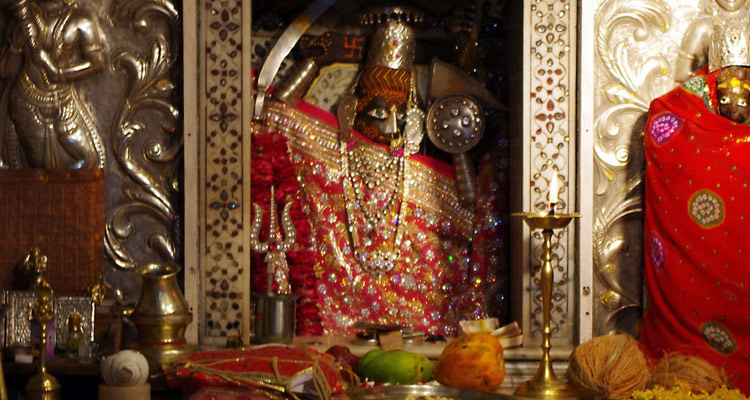 Inside the temple, devotees are greeted by the awe-inspiring idol of Chamunda Mata. Crafted from black stone and embellished with silver and gold ornaments, the deity exudes power and divinity. The atmosphere within the temple is serene and peaceful, providing a tranquil space for meditation and seeking blessings.
Inside the temple, devotees are greeted by the awe-inspiring idol of Chamunda Mata. Crafted from black stone and embellished with silver and gold ornaments, the deity exudes power and divinity. The atmosphere within the temple is serene and peaceful, providing a tranquil space for meditation and seeking blessings.
Throughout the year, the temple attracts a multitude of devotees and tourists alike. However, it truly comes alive during festivals such as Navaratri and Durga Puja. The temple is adorned with vibrant decorations, illuminated with lights, and filled with the sounds of devotional chants and hymns. The festivities create an atmosphere of joy and reverence, enveloping visitors in a spiritual aura.
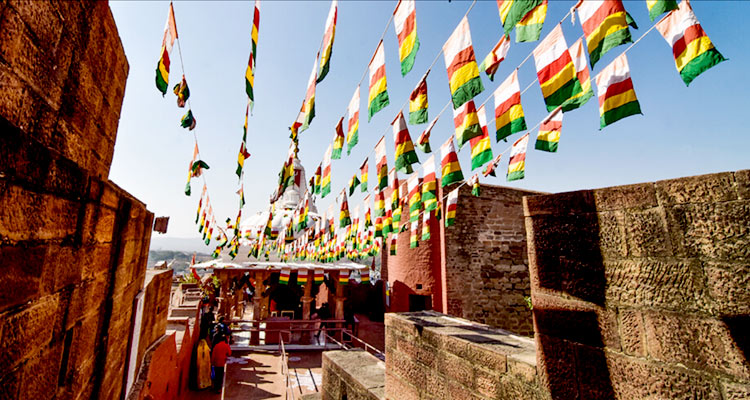
Beyond its religious significance, the Chamunda Mata Temple holds historical importance. It resides within the Mehrangarh Fort, a grand fortress known for its impressive architecture and rich Rajput history. The temple’s presence within the fort complex adds to its allure, drawing in not only devotees but also history enthusiasts and architecture lovers.
Visiting the Chamunda Mata Temple is a memorable experience that offers a harmonious blend of spirituality and cultural exploration. It provides an opportunity to connect with the divine, seek blessings, and find solace amidst the chaos of the world. Moreover, it offers a glimpse into the regal past of Jodhpur and the enduring traditions that have shaped its identity.
Given below are Top 20 Facts about Chamunda Mata Temple Jodhpur
-
- The Chamunda Mata Temple is located in Mehrangarh Fort, Jodhpur, Rajasthan, India.
- It is dedicated to Chamunda Mata, a Hindu goddess associated with strength and power.
- The temple is situated on a hilltop within the fort complex, offering panoramic views of Jodhpur city.
- Chamunda Mata is considered a form of Goddess Durga and is revered by both locals and devotees from all over the world.
- The temple is believed to be several centuries old and has great historical and religious significance.
- The architecture of the temple reflects the traditional Rajasthani style, with intricate carvings and beautiful artwork.
- The deity of Chamunda Mata is depicted as a fierce and powerful goddess, adorned with ornaments and weapons.
- The main attraction of the temple is the idol of Chamunda Mata, which is made of black stone and adorned with silver and gold ornaments.
- The temple is a popular pilgrimage site and attracts a large number of devotees during Navaratri, a nine-night festival dedicated to the goddess.
- Visitors have to climb a series of steep steps to reach the temple, adding to the sense of adventure and spirituality.
- The temple offers a peaceful and serene environment, making it an ideal place for meditation and seeking blessings.
- The temple complex also houses other smaller shrines dedicated to different Hindu deities, such as Lord Hanuman and Lord Shiva.
- The Chamunda Mata Temple is managed by the Mehrangarh Museum Trust, which takes care of its maintenance and preservation.
- The temple is not just a religious site but also a historical treasure, as it is located within the majestic Mehrangarh Fort, which is known for its impressive architecture and rich heritage.
- The fort complex surrounding the temple is a popular tourist attraction, offering visitors a glimpse into the royal history of Jodhpur.
- The temple is known for its vibrant celebrations during festivals like Navaratri and Durga Puja when it is beautifully decorated with lights and flowers.
- Devotees believe that offering prayers and seeking blessings from Chamunda Mata can help overcome obstacles and bring success and prosperity.
- The temple also holds a special significance for the Rajput community, as Chamunda Mata is considered their ancestral goddess.
- The temple attracts not only devotees but also history enthusiasts, architecture lovers, and photographers who appreciate its beauty and cultural significance.
- Visiting the Chamunda Mata Temple in Jodhpur is a memorable experience that offers a mix of spirituality, history, and architectural splendor.
Come, join us on a magical Culture Culinary Craft Tour of Rajasthan India – Experience India’s textile heritage on immersive tours by Lila Travel India – Led by Delhi Native based in Seattle USA – https://lilatravelindia.com/culture-culinary-textile-tour-of-rajasthan/
#culturaltourrajasthan #culinarytourindia #textiletourindia #luxurytoursindia #rajasthan #india #lilatravelindia

